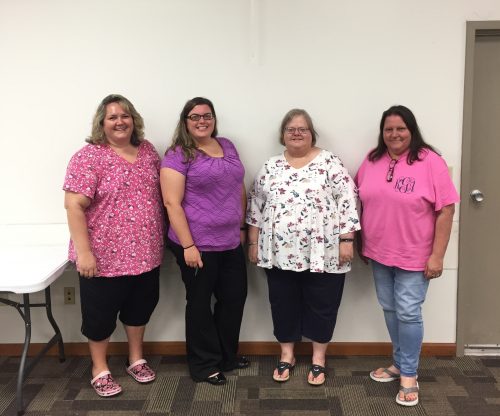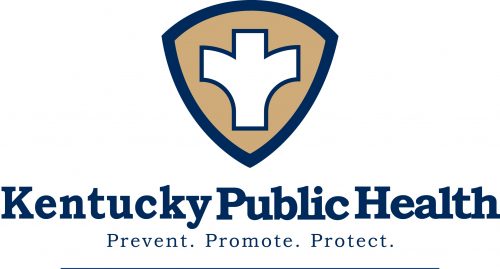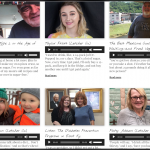
As we think about ways to diversify our economy and improve our quality of life, our health is an essential part of the picture. Disease and mortality rates are considerably higher in central Appalachia than in the rest of the nation and in many ways limit our potential to work and live happily. Prevent Diabetes EKY is a new series produced by Making Connections News to share eastern Kentuckians’ experiences living with diabetes and prediabetes, while showcasing current efforts to slow down or prevent Type 2 diabetes in the region.
If you live in Appalachian Kentucky, the odds are that you know somebody–maybe even a family member–that has Type 2 diabetes: eastern Kentucky suffers from higher rates of type 2 diabetes than the rest of the state, and the rest of the country. But something you might not know is that, in many cases, type 2 diabetes can be prevented, even if it runs in your family. This report focuses in on a lifestyle change program that’s being offered all across the region that is trying to help people do just that — the Diabetes Prevention Program.
Because the symptoms are often hidden, it’s possible to have prediabetes–or sometimes even type 2 diabetes–without even knowing it. For a short quiz to see if you might be at risk, check out doihaveprediabetes.org. The Diabetes Prevention Program is currently offered (or could be, with enough interest) at the Kentucky River District Health Departments, Juniper Health, the Johnson County Health Department, the Clay County Health Department, and the Clover Fork Clinic in Harlan County. You can contact any of those organizations for more information or to sign up.
Pictured here are the Diabetes Prevention Program Facilitators and Participants at Juniper Health in Breathitt County, Ky. L-R: Bridget Turner, Rebecca Smith, Karen Kerr, Kathy Gay.
The Prevent Diabetes EKY series is supported by the Kentucky Department for Public Health.

TRANSCRIPT OF THIS STORY:
NARRATOR: Every other week, a small group comes together at the Breathitt County Extension office in Jackson, Ky., to learn and share and joke and tell stories and support each other in regards to their health. But they’re not sick, and they don’t necessarily have any symptoms of anything— they’re trying to prevent type 2 diabetes.
{Bridget Turner, DPP Facilitator, addressing class} So when y’all eat, what do you usually eat first? {Kathy Gay, participant} Whatever looks the best! {Rebecca Smith, facilitator} Yeah, that’s what I was thinking! {Bridget} I wondered! I save my favorite for last, so I probably eat more of the vegetables first, but sometimes that’s bad, because if I’m full— {Kathy} Then you don’t get your favorite! {Bridget} Or, I’ll eat it anyway! {Rebecca} Or you’ll just eat it anyway, that’s what I was thinking, I would eat it anyway! {Bridget} I’m not about denial.
NARRATOR: The group is meeting through Juniper Health, as a part of the Diabetes Prevention Program, a lifestyle change program developed by the national Centers for Disease Control. Juniper is just one of several clinics and health departments that offer the program across eastern Kentucky, and all of the groups are full of local people, trying to stop diabetes before it starts.
{Bridget}: You hear all the time, people in the clinics, talking about ‘so and so lost a toe,’ or their aunt or uncle lost part of their leg, or, you know, we have a lady who’s lost part of her arm… you know, it’s just ridiculous when it’s preventable!
NARRATOR: Bridget Turner, of Juniper Health, is one of the facilitators of the Diabetes Prevention Program, or DPP, for short. A few years ago, she herself was diagnosed with diabetes.
{Bridget} I was frustrated. There were so many opportunities along the way where I could’ve been given more information that I wasn’t. It was really just disheartening to think, ‘Now I have it, and I didn’t have to have it.’ And that’s probably why when Missy said, ‘Let’s become educators,’ I said, ‘OK!’
NARRATOR: So, especially if you live around here, you’ve probably heard of diabetes, but, briefly, there are two kinds. Type 1 diabetes is genetic, so you have to be born with it. Type 2, though, happens over the course of your life, and, very basically, it’s when your body stops being able to get rid of glucose, or sugar, in your bloodstream. This can lead to serious problems: it can damage your eyesight and your kidneys, it can cause you to lose feeling in parts of your body and eventually even lose limbs, and it also carries a huge risk for cardiovascular disease, which in some cases can be life-threatening.
But even if all this is familiar, there is another condition, known as prediabetes, that you might not know about. Basically, prediabetes means that you don’t have type 2 diabetes yet, but your blood sugar is high enough that you’re officially in the danger zone for getting it. Prediabetes is often diagnosed through what’s known as an A1C test, which takes an average of your blood sugar levels over the past three months.
{Bridget} If your blood sugar is [between] 5.7 – 6.4, you are prediabetic. And if you don’t do some things to make some health changes, the chances of you of actually developing diabetes are pretty high. And once you get Diabetes, once you get over the 6.4 mark, you have diabetes forever. It doesn’t go away. It might be controlled, but according to what we understand, from my medical knowledge, once you get it, you’ve gotten it.
NARRATOR: Part of what makes prediabetes so tricky is that you can have it without any symptoms. According to the CDC, about 1 out of 3 Americans already has prediabetes, whether we know it or not. Jonathan Piercy is a doctor from Hazard, who works in the Diabetes Clinic at Perry County’s North Fork Valley Community Health Center.
{Dr. Piercy} It would probably be easier if high blood sugar hurt, if there were a whole lot of symptoms. But in order to have actual symptoms, acutely, of high blood sugar, then it’s got to be very high. Which is part of why it takes so long for somebody to get treated.
NARRATOR: Sadly, eastern Kentucky has higher rates of diabetes than the rest of the state, and the country. But even though it’s common here, health workers say there are misconceptions about it. For one, they say people don’t always realize that diabetes is preventable, even if it runs in your family. Rebecca Smith is another DPP educator at Juniper Health.
{Rebecca} I actually had somebody pretty well known in the community tell me… he said, ‘I got that diabetes, I knew it was coming, it just finally got me! I was like— {Doris Newton, DPP Participant} It come and got him, huh? {Rebecca} It come and got him! Right off the couch!
{Mary Beth Castle} I think it’s just become commonplace for people: Grandpa had diabetes, Granny had it, my sister had it, my aunt had it, and everybody just kind of is like, ‘OK, I have diabetes now.’
NARRATOR: Mary Beth Castle is the DPP educator at the Johnson County Health Department in Paintsville. She herself was diagnosed with prediabetes a few years ago.
{Mary Beth} OK, maybe I am gonna end up with type 2 diabetes later on in life, I mean, the possibilities for me are good. But— I’m willing to take the chances to try to prolong all of that down the road as long as I can.
NARRATOR: And the DPP is set up to help people, especially people with prediabetes, try prolong or even prevent diabetes entirely. It varies a little by county, but it’s a year-long program: you meet in a small group once a week for sixteen weeks, and then about once a month after that. Everyone gets an individual weight loss goal, and then, you focus on strategies for getting there: like healthy recipes, keeping a log of what you eat, or tricks to get more exercise over the course of the day. Bridget says losing as little as 5-7% of your weight can go a long way in preventing diabetes.
{Bridget} We know that increasing activity and making better food choices can help prevent diabetes. What we have found is people who come in gung-ho for the program, and have a lot of weight loss up-front, tend to burn out. Because they go so hard and so fast, it’s not something that they can sustain for a lifetime. We talk a lot about baby steps: if you drink a lot of sugary beverages, where is maybe one less beverage that you could drink? Can you get up on a TV commercial and walk to the bathroom and come back? We want you to start thinking about ways that you can be more active. And 5-7%, if you weigh 300 lbs, 5% of that’s only 15 lbs, alright? So, that’s doable!
NARRATOR: Another misconception the DPP tackles is that it’s only sweet foods that can lead to diabetes. Here’s Dr. Piercy again.
{Piercy} This is a point that a lot of people miss, is we’re not just talking about things that are sweet. We’re talking about breads, talking about potatoes, talking about starchy things— that’s probably where more people get in trouble. It’s the same molecules, the same glucose that gets formed when they break down.
{Bridget} You know, and just understanding reading the label. If you’re eating a low-fat yogurt, and you think you’re doing great, but then you compare the low-fat yogurt with a light yogurt, and you realize the low-fat yogurt has twice the carbs in it as the light does, then you realize, ‘Oh my goodness, I thought I was doing good!’ Well you were doing good, you just didn’t have all the information. So here’s a little bit more information.
NARRATOR: Once you start to realize how much turns into glucose, whether it’s ice cream, or bread, or potatoes, it can be overwhelming. But it doesn’t mean you have to stop eating everything you like. Here’s Mary Beth again.
{Mary Beth} I don’t tell them they can’t eat this or they can’t eat that. I tell them they can have what they want to eat— they need to do it in moderation, and they need to look at portion sizes. We live in an area where our grannies and our mommas want our plates to be full of food and they want us to eat everything on there. Trying to get them to get back to that, instead of three spoonfuls, start with two of green beans instead of three of the green beans, even though that’s probably a better things that you could eat. Because if they just cut back on portions alone, that’s gonna make a difference.
I don’t expect them to come in here and have 10 lbs loss, you know, in a week. Or maybe not even 10 lbs in a month. If they’re moving the scale in the downward direction, that’s what we want them to do. And I want them to feel good about it.
{Rebecca Smith, in DPP Class} Kathy, on the other hand, did have a log for me. {Karen, DPP Participant} She’s good. {Rebecca} She’s so good! {Bridget} She gets bonus points for the day. {Rebecca} Bonus points! Look at that, one cup of water! {Bridget} Way to track, Kathy. {Rebecca} Yoo-hoo!
{LaDonna Arms, DPP Participant} Well, I was probably in denial, but my parents and my family have it. And, life had happened to me. I lost both parents within 7 months. I was a caretaker, so I didn’t get out a lot.
NARRATOR: LaDonna Arms is from Painstville, Ky., and has been a member of the DPP group at the Johnson County Health Department. Mary Beth has been her group leader.
{LaDonna} I guess it was just dealing with everything with my parents. And then, when I lost them, I’m thinking, ‘You know what, I’m not getting any younger. It’s really time for me to get it in gear, you know? Get it under control.’
I started making gradual changes. I started walking a lot. Like, Saturday I walked over seven miles. And I may want a candy bar, but then I may look at that calorie and sugar content and I’ll think, ‘I don’t need that.’ So I may take a piece of fruit. And I was a big pop person, but it’s unbelievable amounts of sugar. I tried the sugar-free cherry kool-aid, you know, drank a lot more water… just make better choices. And I feel a lot better.
{Mary Beth} Do you care to share how much weight you have lost? {LaDonna} As of today, 23 pounds. This has been life-changing for me. And I couldn’t have hand-picked any better group.
{Doris Newton, DPP Participant} Had I thought about being diabetic? No. Not really. I didn’t have it in my family, I didn’t have any symptoms. But I also know that I didn’t want any.
NARRATOR: Doris Newton lives in Jackson, Ky. She recently went through the Juniper DPP program in Breathitt County.
{Doris} I think, accountability: that’s probably the biggest thing that got me where I wanted to be. And because we did it together, the other class members, and we were always very verbal about, ‘Did you lose any? Oh, if you didn’t, it’ll be alright next week.’ And I was pretty successful. I think I did lose the most in that class… 23 pounds.
{Masha Ott, DPP Participant} It was nice to not have to suck it up to zip your pants.
Masha Ott lives in the community of Wolverine, and was in the same class as Doris.
{Masha} But I just followed, exactly, their protocol, and it really really works, in terms of knocking the pounds off… I think it was 17, if I counted right. Diabetes is something you can turn around. Nip it in the bud, you can change it! {Doris} And a program like this can help you make those changes.
NARRATOR: None of this is to say the DPP is easy, though. For one, changing habits is always hard. But healthier food can take more time to prepare, and is often more expensive, which can be tough if you’re on a budget. And in many parts of the region, places to buy groceries at all can be few and far between. Many local communities also just don’t very many practical, or affordable, places to exercise. The participants I spoke with, though, said these challenges were real— but the key for them was doing it together.
{LaDonna} The weekly meeting is wonders. And just getting to hear what everybody else is doing. You know, if they’ve had a rough week, if they’ve had a great week, you know, just that moral support. That’s the biggest thing.
{Rebecca, in DPP Class} 39.06 We have talked a lot about pop. How’s it going Kathy, for you, with drinking pop? {Kathy} I’m a-drinkin’ her. {Rebecca} Are you drinkin’ her? That’s okay! {Bridget} But are you enjoying it? {Kathy} …yes. {Bridget} Well then, there you go. But you’re targeting other areas. {Rebecca} Yes.
{Bridget} I have not met anybody that wants to make choices to lead them to diabetes, on purpose. You know and even myself, am I as healthy as I need to be? No. But I don’t drink pop anymore, you know? And my A1C is in a good place. I will not do things that are going to contribute to me not being able to see my grandchildren. My father-in-law lost his vision. And my last baby, he didn’t get to see. That was preventable. My brother-in-law died from diabetic complications. That was preventable. That doesn’t have to happen.
{LaDonna} And I’m looking for a life change. I don’t want this to just be for three or four more months, and then stop. I want it to be for a lifetime.
NARRATOR: In eastern Kentucky, the Diabetes Prevention Program is currently offered in small groups at the Kentucky River District Health Department, Juniper Health, the Clover Fork Clinic, the Johnson County and Clay County Health Departments, and online. To get your A1C checked, it’s a simple blood test that your doctor can do in a single visit. For more on all this, and for a short quiz to see if you might be at risk for prediabetes, check out doihaveprediabetes.org.




